Ivan Franko Park (formerly, Jesuit Gardens)
Ivan Franko Park occupies the property located on a hillside of the Lviv Heights between Lystopadovoho Chynu and Krushelnytskoi Streets. The land was once part of an outlying monastic (Jesuit) grange, from which the name Jesuit Gardens is derived. Toward the close of the 18th century, Emperor Joseph II granted the land to Lviv townsfolk for the establishment of a municipal park. In 1855, the territory was redesigned by town horticulturist Karl Bauer as a landscaped park. The arboreal landscaping boasts a variety of species of varying ages including maples, oaks, linden, chestnut, and others.
Architecture
The municipal park known as Ivan Franko Park was established on the territory of an old Jesuit Order grange located in the southwestern, and previously outlying, section of the city. It occupies a trapezoid on a gentle hillside of the Lviv Heights.
The establishment of the Jesuit Gardens as a municipal park set in motion the creation of the second ring – following that of the lane and the walks on “the heights” – of parklands in Lviv’s “Emerald Gown” system, to invoke Zygmunt Stankiewicz’s delightful phrase (Stankiewicz, 1928, 63). This outer ring would eventually include Vysoky Zamok Park and abut the Znesinnya parcel of land, the Tsetnerivky green zone, the Lychakiv Cemetery and Walks (Pohulyanky), Stryiskyi Park and other tracts of green space which encircled the town’s historical center in the Poltva dale.
Near the close of the 19th century, Michal Kowalczuk published the following account: “The municipal gardens, known also as the Jesuit Gardens…is the closest to the city center. It fills a parallelogram between Marshalkovska, Mitskevych, Mateyko and Krashevsky Streets (presently, Universitetska, Lystopadovoho Chynu, Mateyko, and Krushelnytskoi) (Miasto Lwów, 1896, 318).
Lviv’s oldest municipal park enjoys a varied, and striking, layout. On its northern edge it adjoins the central building of Lviv University, the former Galician Council building. Near its southern, elevated side, sits the historical campus of Lviv Polytechnic. On the western side, on Lystopadovoho Chynu Street, the former residence of the Galician Eparchy (currently the Railroad Hospital campus) is located within park grounds. On the east, along the odd-numbered side of Krushelnytskoi Street we may observe a housing complex embodying one of the finest examples of Historicist architecture in Lviv. The St. George Cathedral dominates the southwestern corner of the park.
The massive railroad administrative center, built at the base of St. George’s Hill at the start of the 1910s, strikes a dissonant note in this otherwise elegant architectural ensemble. Even greater disruption is brought by the prismatic, multi-storied block of the Hotel Dniester. Erected in the 1970s, the hotel stands over the park, an alien presence in the neighborhood’s architectural panorama.
Over the park’s more than three-century-long existence its layout has undergone repeated readjustments. Ivan Krypyakevych writes that by the end of the 16th century, “the tradesman Johannn Szolc-Wolfowicz expended 1,600 gold pieces on the garden. From there it passed into the hands of his son-in-law Antonio Massari, an Italian originally from Venice, and he designed a park after the Italian manner”. Johann Höcht subsequently reformulated the park “in the French manner” (Krypyakevych, 1991, 122), and from that time we observe a consistent, geometric, “French” structure to park lanes, as attested on Lviv maps dating from the first half of the 19th century. Karl Bauer’s original plan for the territory was for an asymmetrical landscaped park. Lviv’s Jesuit Gardens have conformed to Bauer’s basic 1855 configuration and layout now for more than a century and a half.
Sometime later, structured flower beds in a style characteristic of baroque-era horticulture were laid in on the lower terraces near the Galician Eparchate. This floral accent stands out as it repeats along the park’s central lane. The lane, reestablished in the 1920s, runs straight uphill the length of the territory, parallel to Krushelnytskoi and Lystopadovoho Chynu streets. It runs along the park’s eastern edge with spacious, winding paths branching off it. In search of relaxation, one may select the lively and popular “main throroughfare” or a cozy spot in the heart of the park, removed from the crowd. The park also has a children’s play area.
Of the buildings in Ivan Franko dating from the first half of the 19th century, there is a rotunda with Doric colonnade typical of park structures from the Romantic era. At the entrance of the central lane stands a Classical iron vase with relief influenced by the work of Bertel Thorvaldsen.
In 1964, the Ivan Franko monument (sculptors, Valentyn Borysenko, Dmytro Krvavych, Emmanuil Mysko, Vasyl Odrekhivskyi, and Yakiv Chaika; architect Andryi Shulyar) was raised in the park opposite the Academic Center of Lviv University. Flowerbeds were removed to make room for the sculpture, breaking the compositional line – as noted by Tetyana Maksymiuk – which both visually and functionally, linked the university campus with the lower entrance to the park (Lviv Architecture, 2008, 637).
According to Michal Kovalchuk, in the 1890s the Jesuit Gardens encompassed 10.17 hectares where grew "ironwood, elm, linden, larch, arborvitae, spruce and fir, black elderberries, hawthorn, and hazelnuts…" (Miasto Lwów, 1896, 318-319).
Olena Stepaniv imparts the following information gleaned from the early 1940s: “The soil in the park is a mixture of clay, sand, and humus. The formerly boggy lower gardens were filled in and drained. Oaks, maples, poplar, ironwood, linden, elm, fir, larch, and even a few Pryvyslianskyi poplar. Park vegetation suffered a great deal of damage in the war (1939-1941)” (Stepaniv, 1992, 46).
Of the trees in Ivan Franko Park, the maples lining the central lane, the old oaks in the upper reaches of the park, and the ashes near the Doric Rotunda are certainly impressive (Lviv Architecture, 2008, 638). The park has both old and new growth trees, with its primary stand comprised of plantings dating from the mid to late-19th century. In addition to native European flora, exotic specimens from South America, the Far East, and the Mediterranean region have been planted in the park.
As of today, the park occupies 11.6 hectares.
Related Places
Territory of Franka Park – monument to Agenor Goluchowski (does not exist)
Show full description
Personalities
Karl Bauer. Landscape architect, park
designer.
Valentyn Borysenko. Sculptor.
Franciszek Wędrychowski. Park owner.
Johannn Höcht. Park owner.
Joseph II. Holy Roman Emperor of the Habsburg
Dynasty.
Michal Kowalczuk. Architect, critic, guidebook
author.
Dmytro Krvavych. Sculptor.
Ivan Krypyakevych. Historian.
Tetyana Maskymiuk. Architectural Historian.
Antonio Massari. Venetian Consul, property owner.
Emmanuil Mysko. Sculptor.
Vasyl Odrekhivskyi. Sculptor.
Zygmunt Stankiewicz. Engineer, ethographer.
Olena Stepaniv. Historian, geographer, civic
activist.
Bertel Thorvaldsen. Sculptor.
Bohdan Khmelnytskyi. Cossack Hetman.
Yakiv Chaika. Sculptor.
Scholz-Wolfowitz. Bourgeois, merchant family,
landowners.
Andryi Shulyar. Architect.
Organizations
Sources
- Biriulyov, Yuryi, ed. Architecture of Lviv: Times and Styles, 13th-21st centuries. Lviv: Center of Europe Publishing, 2008. Print.
- Krypyakevych, Ivan. Historical Walks Around Lviv. Lviv: Kamenyar, 1991. Print.
- Stepaniv, Olena. Contemporary Lviv: A Guidebook. Lviv: Phoenix, 1992. Print.
- Barański F. Przewodnik po Lwowie: Z planem i widokami Lwowa (Lwów, [1902]).
- Janusz B. Przewodnik po Lwowie: (Z planem miasta) (Lwów, 1922).
- Jaworski F. Lwόw stary i wczorajszy (szkice i opowiadania): Z ilustracyami. Wydanie drugie poprawione (Lwów, 1911).
- Miasto Lwów w okresie samorządu 1870–1895 (Lwów, 1896).
- Orłowicz M. Ilustrowany przewodnik po Lwowie: Ze 102 ilustracjami i planem miasta. Wydanie drugie rozszerzone (Lwów – Warszawa: Książnica-Atlas, 1925).
- Stankiewicz Z. Ogrody i plantacje miejskie // Lwów dawny i dzisiejszy: Praca zbiorowa pod redakcja B. Janusza (Lwów, 1928), 62–71.
Material Assembled by Ihor Zhuk, december 2012.
Media Archive Materials
Related Pictures
-
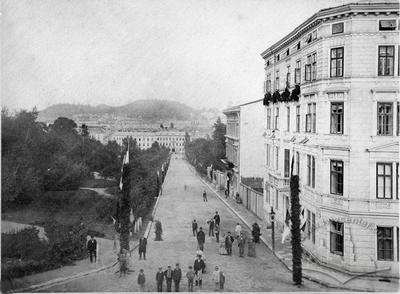 Вулиця Крушельницької
Вулиця Крушельницької
-
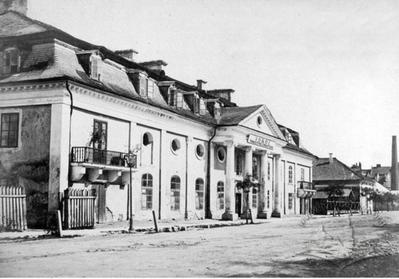 Товариство "Сокіл" в давньому казино Гехта
Товариство "Сокіл" в давньому казино Гехта
-
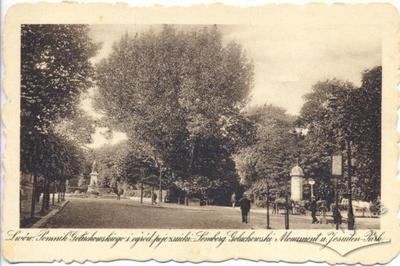 Пам'ятник Голуховському та поєзуїтський парк
Пам'ятник Голуховському та поєзуїтський парк
-
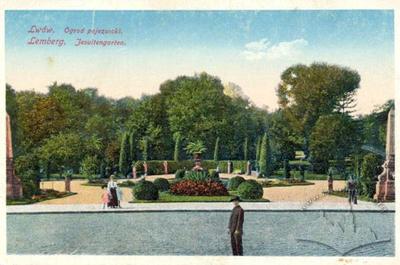 Центральний вхід до парку імені Івана Франка
Центральний вхід до парку імені Івана Франка
-
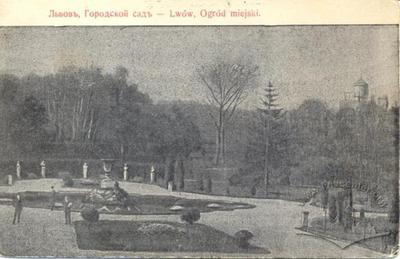 Вид на парк ім. Івана Франка
Вид на парк ім. Івана Франка
-
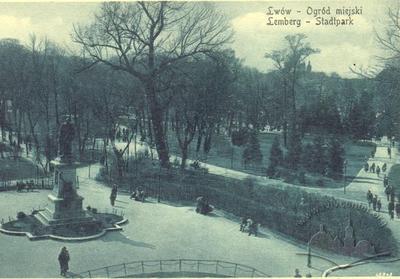 Парк ім. і.Франка
Парк ім. і.Франка
-
 Парк Івана Франка під час польсько-української війни
Парк Івана Франка під час польсько-української війни
-
 Пам'ятник Голуховському та поєзуїтський город
Пам'ятник Голуховському та поєзуїтський город
-
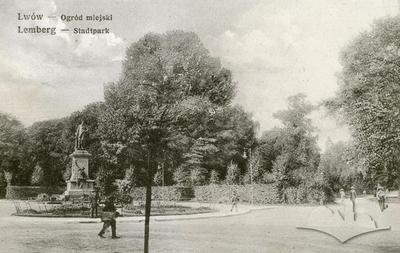 Міський парк
Міський парк
-
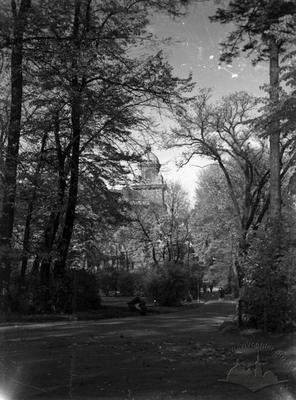 Парк ім. І. Франка
Парк ім. І. Франка
-
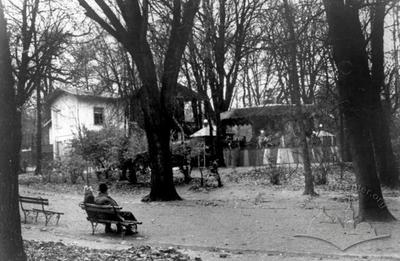 Дитячі атракціони в парку ім. І. Франка
Дитячі атракціони в парку ім. І. Франка
-
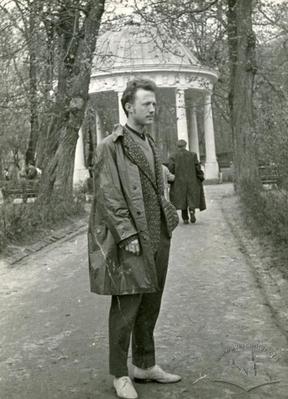 Алея парку ім. І. Франка
Алея парку ім. І. Франка
-
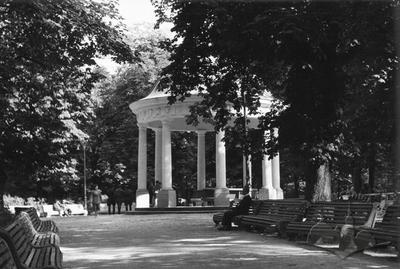 Куточок парку ім. І. Франка
Куточок парку ім. І. Франка
-
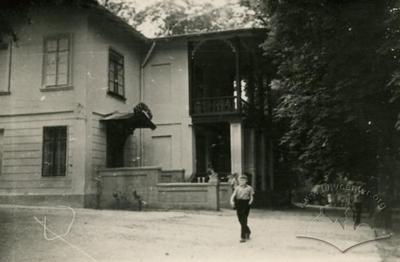 Ресторан в парку ім. І. Франка
Ресторан в парку ім. І. Франка
-
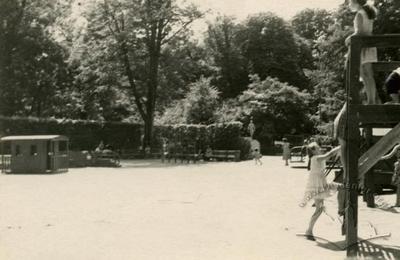 Дитячий майданчик в парку ім. І Франка
Дитячий майданчик в парку ім. І Франка
-
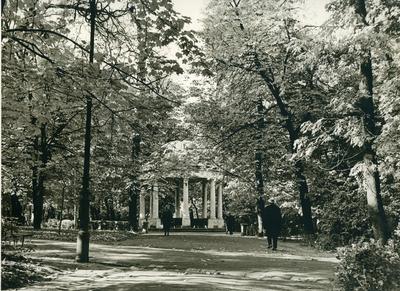 Альтанка у парку ім. Івана Франка
Альтанка у парку ім. Івана Франка
-
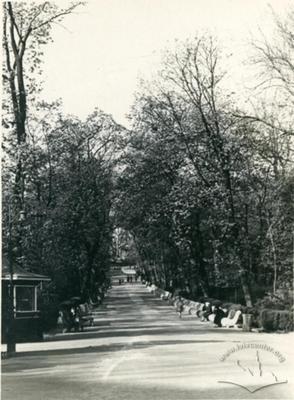 Парк ім. Івана Франка
Парк ім. Івана Франка
-
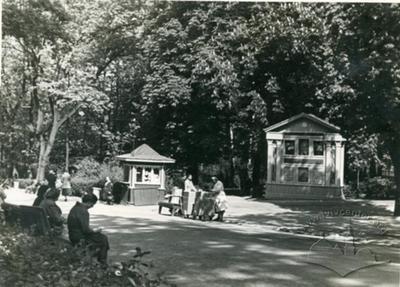 Парк ім. Івана Франка
Парк ім. Івана Франка
-
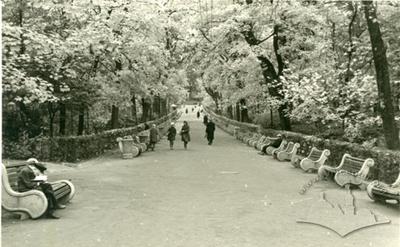 Парк ім. Івана Франка
Парк ім. Івана Франка
-
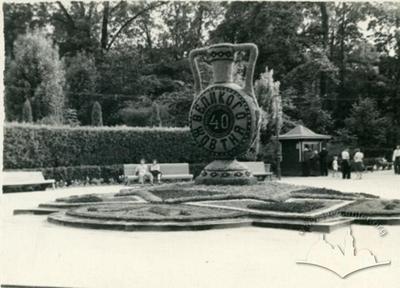 Клумба в парку ім. Івана Франка
Клумба в парку ім. Івана Франка




















